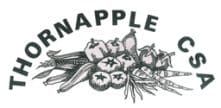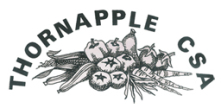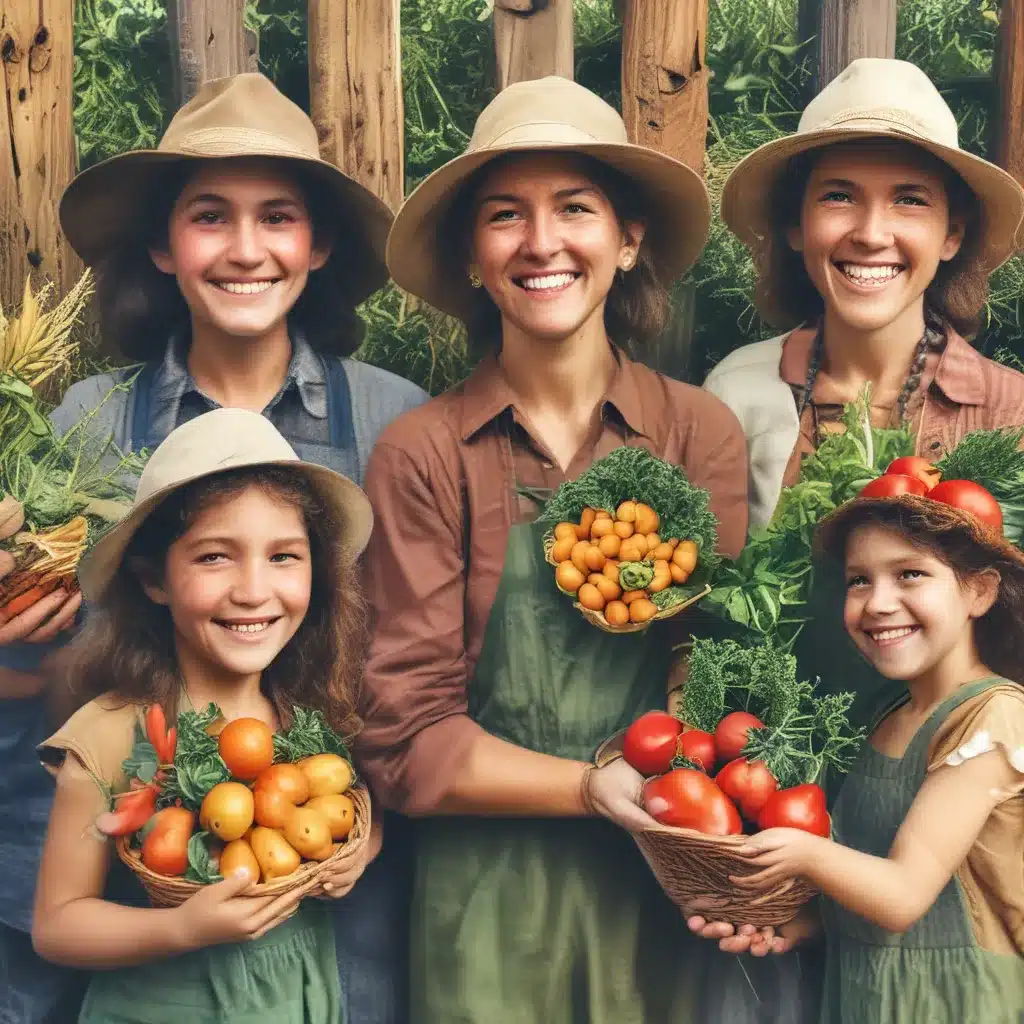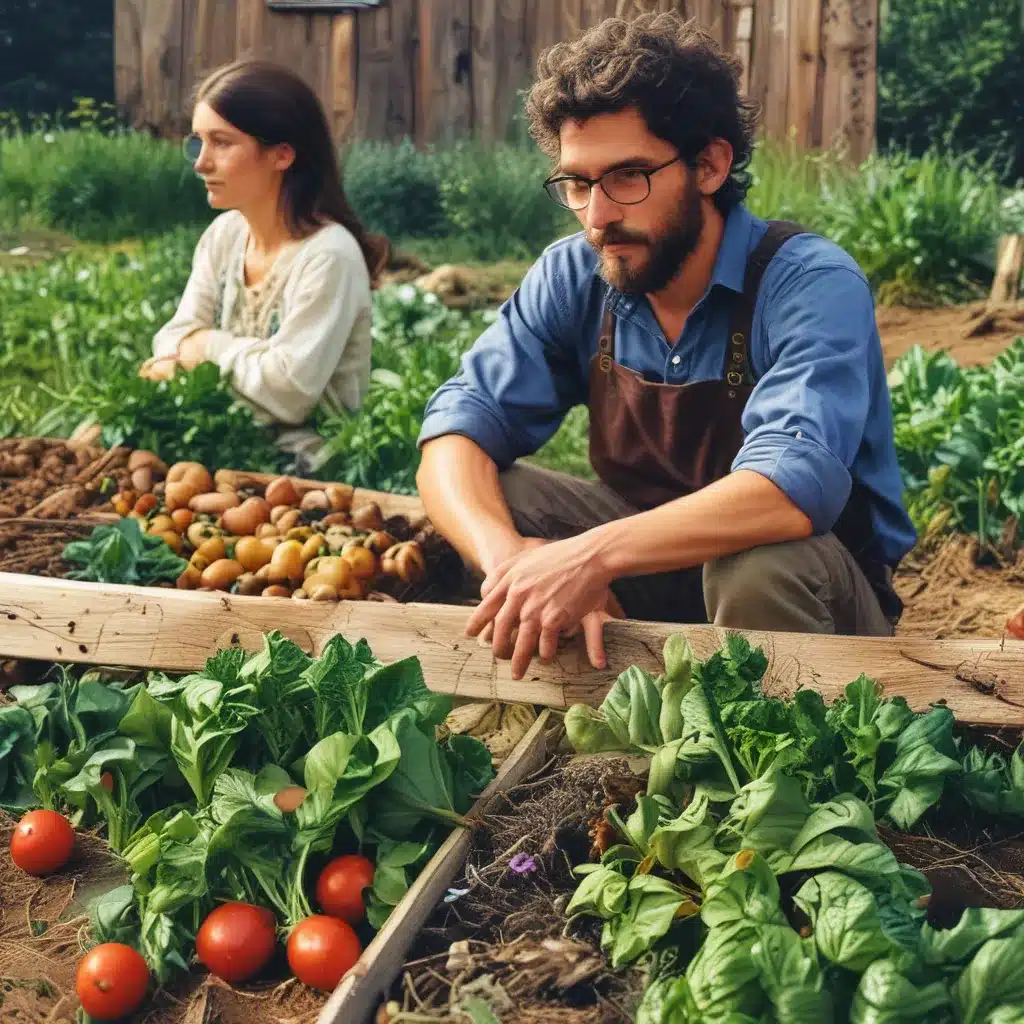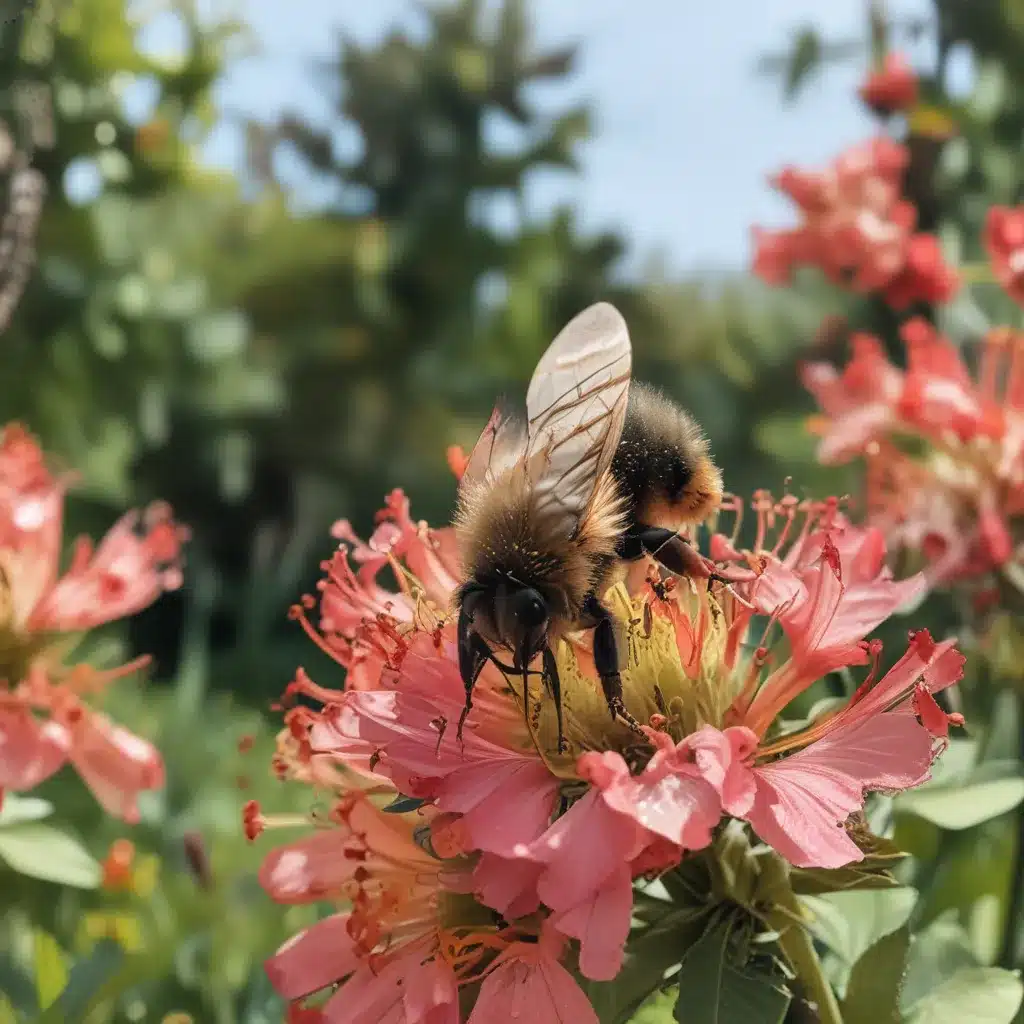
The Lush Meadows Buzzing with Life
As I step onto the lush, verdant meadows of the Thornapple Fields, a symphony of chirps, buzzes, and fluttering wings greets me. It’s as if the very air is alive, pulsing with the energy of countless pollinators, each one playing a vital role in the intricate dance of nature. This is my second season as a member of the Thornapple Community Supported Agriculture (CSA) service, and every visit fills me with a sense of wonder and gratitude.
The Thornapple CSA is more than just a place to source fresh, organic produce – it’s a living, breathing ecosystem where the delicate balance between humans and nature is celebrated and protected. And at the heart of this vibrant community are the pollinators, the unsung heroes that make it all possible.
The Vital Role of Pollinators
As I wander through the fields, my eyes are drawn to the vibrant blooms of wildflowers, each one a beacon for the countless bees, butterflies, and hummingbirds that flitter from blossom to blossom. It’s a sight that never fails to fill me with awe, for these pollinators are the lynchpin of our global food system.
Without pollinators, we would face a grim future, one where our once-abundant food supply dwindles and our vibrant ecosystems collapse. It’s a sobering thought, but it’s also a powerful reminder of the crucial role these tiny creatures play in sustaining life on our planet.
Cultivating a Pollinator-Friendly Oasis
As I delve deeper into the Thornapple Fields, I can’t help but marvel at the meticulous care and attention that has been poured into creating this pollinator-friendly oasis. The nearly native plant habitat garden is a testament to the dedication and foresight of the Thornapple CSA team, who have intentionally curated a diverse array of flowering plants to cater to the varying needs of the pollinators that call this place home.
From the cascading blooms of the purple coneflowers to the delicate, lace-like flowers of the Queen Anne’s Lace, every inch of the Thornapple Fields has been thoughtfully designed to provide food, shelter, and nesting sites for these vital creatures. And it’s not just the plants that have been carefully selected – the team has also implemented sustainable farming practices that minimize the use of harmful pesticides and herbicides, ensuring that the pollinators can thrive without fear of exposure to toxic chemicals.
The Delicate Balance of Nature
As I wander through the fields, I’m struck by the intricate web of interdependence that binds the pollinators to the plants they serve. Each species has a unique role to play, from the honeybees that pollinate the fruit trees to the hummingbirds that dart between the nectar-rich flowers. It’s a delicate balance, one that requires a deep understanding of the complex relationships that underpin the natural world.
The Thornapple CSA team has clearly invested time and resources into studying these relationships, and their efforts are paying off in the form of a thriving, diverse ecosystem that hums with life. As I watch the bees dart from blossom to blossom, I can’t help but feel a sense of wonder and gratitude for the incredible work they do, pollinating the plants that sustain us all.
Celebrating the Pollinators
One of the things I love most about the Thornapple CSA is the way they celebrate the pollinators and their vital role in the food system. Throughout the growing season, they host a series of events and workshops that educate members on the importance of these creatures and what we can do to protect them.
From guided tours of the pollinator gardens to hands-on workshops on building bee-friendly habitats, the Thornapple team is committed to empowering their community to become active stewards of the land. And it’s not just the members who benefit – the wider community is also invited to participate, fostering a sense of shared responsibility and ownership over the health of our local ecosystems.
The Thornapple CSA: A Model for Sustainable Farming
As I reflect on my time at the Thornapple CSA, I can’t help but feel inspired by the holistic approach they’ve taken to farming and community engagement. By prioritizing the protection of pollinators and the overall health of the land, they’re not only providing their members with fresh, nutritious produce, but they’re also contributing to the long-term sustainability of our food system.
It’s a model that I believe should be emulated by farmers and CSA services across the country. By creating pollinator-friendly habitats, implementing sustainable farming practices, and educating their communities, the Thornapple team is demonstrating that it’s possible to grow food in harmony with nature, rather than in opposition to it.
Conclusion: The Buzzing Symphony of Life
As I reluctantly bid farewell to the Thornapple Fields, the memory of the vibrant, buzzing symphony of life lingers with me. I know that I’ll be back, time and time again, to witness the ever-changing tapestry of blooms and the tireless dance of the pollinators that bring them to life.
For me, the Thornapple CSA is more than just a source of fresh, organic produce – it’s a living, breathing reminder of the delicate balance that sustains our world, and the crucial role that we all play in protecting it. And as I look towards the future, I can’t help but feel hopeful, knowing that there are communities like Thornapple leading the way in the fight to protect our pollinators and the vibrant ecosystems they sustain.
